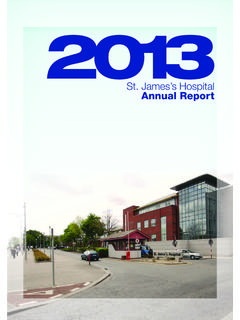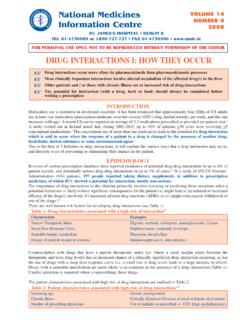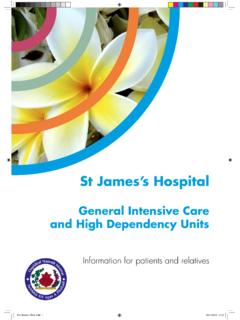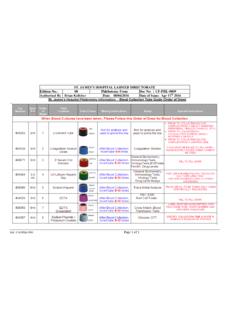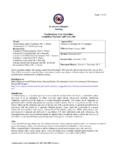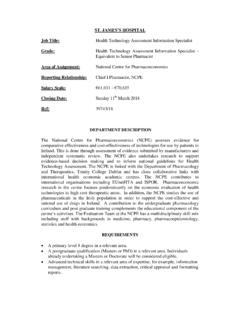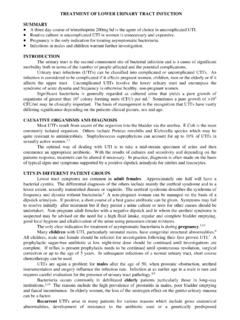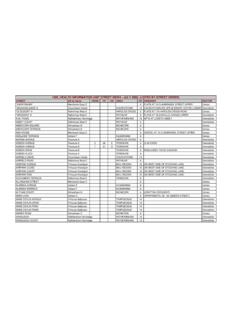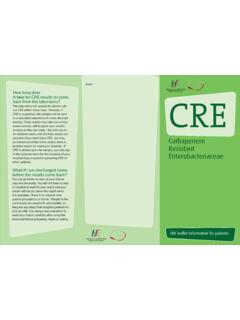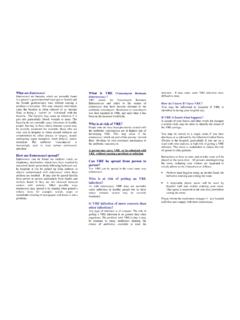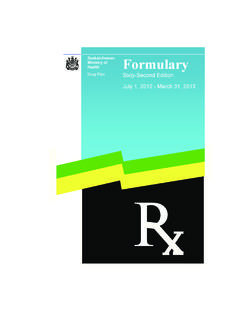Transcription of National Medicines Information Centre - St. James's …
1 National MedicinesInformation CentreST. JAMES S hospital DUBLIN 8 TEL 01-4730589 or 1850-727-727 FAX 01-4730596 10 NUMBER 6 2004 MEDICATION SAFETYSUMMARYP rescription of Medicines is the commonest healthcare interventionPrescribing is controlled by legislationAdverse drug reactions and medication errors are the commonest cause of preventableiatrogenic diseaseThe ICGP and NMIC have developed medication record cards to promote medicationsafety. INTRODUCTIONThe prescribing of Medicines is the commonest healthcare intervention in developed adverse effects (so-called ADRs) are a significant cause of morbidity and/or mortality. It hasbeen estimated that up to 98,000 deaths from medical error occur in the US each year2and a recent UKstudy has shown that ADRs were responsible for >6% of hospital prescribing may bedefined as the appropriate use of Medicines , using best available clinical This bulletin outlinesthe rules of prescribing, the risks for developing ADRs and specifically looks at a recent joint initiativebetween the Irish College of General Practitioners (ICGP) and the National Medicines InformationCentre (NMIC)
2 Aimed at improving medication safety and anticoagulant REGULATIONThe EU has laid down rules on the classification of medicines5that have been incorporated into nationallegislation. The supply of Medicines to the marketplace in Ireland is controlled by The Medicinal Products(Prescription and Control of Supply) Regulations, Regulations outline several differentclassifications ( Schedules ) relating to the supply of Medicines to the market. The First Schedule(S1)lists all Medicines subject to prescription control; this is further subdivided into three classes (S1A, S1B,S1C)which have implications for the way a prescription should be written and dispensed. Table 1 givesexamples of the various sub-divisions in the First Schedule.
3 The dispensing of a prescription for a S1 Amedicine is restricted to one occasion only unless the prescriber specifically states that it can be dispensedon more than one occasion. It is not sufficient to write repeat on the prescription for S1A Medicines ;specific dosages, and either the number of occasions or the intervals of supply ( weekly / monthly)must be clearly specified. S1 Bcontains those Medicines for which a prescription may be repeated for up tosix months from the date of issue, unless the prescriber specifically limits the number of repeats or theamount to be dispensed. S1B includes most Medicines for chronic use. S1 Cindicates a prescription thatmay only be dispensed in a hospital setting ( radio-pharmaceuticals) and therefore is not used in theprimary care setting.
4 Table 2 outlines the basic requirements of a Regulations also cover the following areas: Medicines which are exempt from prescription control ( over-the-counter sale) and the circumstances of their sale and supply ( NSAIDs and anti-fungalagents for topical use); the controls for hormonal preparations, including corticosteroids for topical use;the mechanism for the emergency supply by a pharmacist of prescription-only Medicines without aprescription. The complete text of the Regulations, including a full listing of all prescription-onlymedicines is available at: (look for SI 540, 2003). For Personal Use Only. Not to be reproduced without permission of the editor*repeated only if prescription specifically worded ** except insulin which is in Schedule S1B**flunitrazepam/temazepam also subject to prescription writing requirements under the Misuse of DrugsRegulations (see below)PRESCRIPTION OF CONTROLLED DRUGSThe Misuse of Drugs Regulations (1988; 1993)7set out the conditions under which controlled drugs maybe produced, possessed, supplied, imported or exported.
5 Controlled drugs are classified into fiveschedules with different controls applying to each. Opiates and synthetic narcotics for medicinal use ( , methadone and buprenorphine) are contained in Schedule 2 and are termed CD2 for controlled drugs carry additional requirements to those outlined in Table 2. Theseinclude the following: The prescription must be in ink or otherwise to be indelible. Certain minimum Information must be in theprescriber s own handwriting such as the name and address of the patient, the dose to be taken, the form(in the case of preparations), the strength (when appropriate) and, in both words and figures,either thetotal quantityof the drug or preparation or the number of dosage unitsto be supplied.
6 The prescriptionmust also be signed and dated by the prescriber in his own handwriting. A prescription for controlleddrugs cannot be repeated but may be dispensed in installments by the direction of the prescriptions without the above Information in the prescriber s own handwriting arenot DRUG REACTIONS/MEDICATION ERRORSM edicines not only have the ability to produce therapeutic benefit (the rationale for their prescription),they can cause unwanted or unexpected adverse reactions. The EU definition of an adverse drug reaction(ADR)is a response to a medicinal product which is noxious and unintended and which occurs at dosesnormally used in man for the prophylaxis, diagnosis or therapy of disease or for the restoration, correctionor modification of physiological majority of ADRs are predictable ( from thepharmacological profile) and are commonly dose-dependent (Type A).
7 Type A reactions account for up to80% of ADRs. Type B reactions are idiosyncratic, unpredictable and usually independent of dose; theytend to have greater morbidity and potential mortality. Factors that are known to increase the risk of anADR include: 1) extremes of age, 2) underlying poor health status, 3) female gender and 4)polypharmacy (defined as the concurrent use of five or more Medicines ) which results in increasedpotential for drug-drug 1: Legal Classification of Medicines in Ireland: examples of prescription-only Medicines (POM) Drug NameSchedule ClassificationMethod of SupplyAnti-microbial agentsS1 APOM (restricted repeat)*All parenteral Medicines **S1 APOM (restricted repeat)*Benzodiazepines**S1 APOM (restricted repeat)*Methotrexate / ciclosporinS1 APOM (restricted repeat)*Anti-diabetic agentsS1 BPOM (repeatable X 6mths.
8 Anti-hypertensive agentsS1 BPOM (repeatable X 6mths.)NSAIDsS1 BPOM (repeatable X 6mths.)Proton pump inhibitorsS1 BPOM (repeatable X 6mths.)Table 2: Basic requirements of a prescription-Prescription must show the qualifications of prescriber*-Prescription should be written in ink / be indelible (including computer-generated prescriptions) and be signed and dated by the prescriber-Full name, address of patient and date of birth (if <12 years) should be included-Writing should be legible* only registered doctors or dentists are allowed to prescribe in Ireland. ADRs that occur in the primary care setting can result in hospital admissions / Accident and Emergencyconsultations or use of other healthcare services.
9 The exact number of ADRs experienced by patients isunknown but a recent study involving two large UK hospitals reported that of admissions wererelated to ADRs, which was the direct cause of admission in 80% of these reactions wereeither definitely or possibly avoidable. Drugs most commonly implicated included warfarin, diuretics,low dose aspirin and NSAIDs,with gastrointestinal bleeding being the commonest adverse errorsmay be defined as any error in the prescribing, dispensing or administration of a drug,whether there are adverse consequences or are reported to be the commonest preventable causeof patient In one US study the rate of serious medication error ( preventable ADRs pluspotential adverse drug events)
10 Was recorded at errors have been reported to account forapproximately 10-20% of legal claims against general errors may arise fromincorrect drug selection for a patient in terms of dose, strength, route, quantity or contra-indications. Arecent Irish study showed that 5% of prescriptions reviewed were illegible, another major source ofmedication 3 outlines ways of reducing prescribing errors. IMPROVING MEDICATION SAFETYThe number of patients on complex medication regimens is increasing. Many currently approved regimensdemand that patients should take several Medicines with differing modes of action ( combined therapyfor hypertension15;use of several Medicines in the secondary prevention of cardiovascular disease16).
